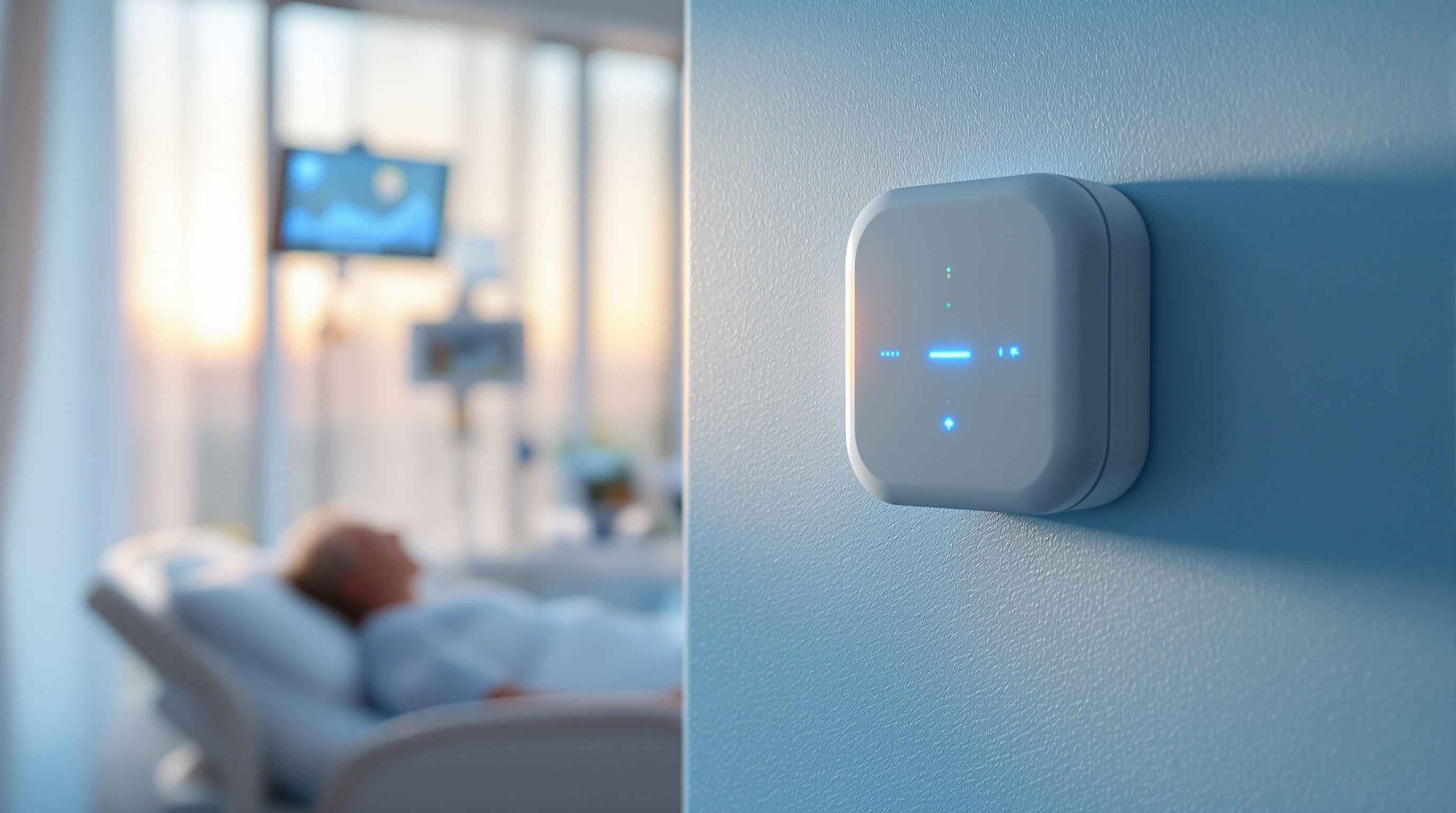EHR Integration for Skilled Nursing: Boost Care & Efficiency
Discover how EHR integration for skilled nursing facilities streamlines workflows, enhances interoperability, and improves resident care quality.
Quick Navigation
- 1. Introduction
- 2. Current Challenges in EHR Integration For Skilled Nursing
- 3. How Sparkco AI Transforms EHR Integration For Skilled Nursing
- 4. Measurable Benefits and ROI
- 5. Implementation Best Practices
- 6. Real-World Examples
- 7. The Future of EHR Integration For Skilled Nursing
- 8. Conclusion & Call to Action
1. Introduction
Did you know that over 90% of skilled nursing facilities (SNFs) in the United States have adopted some form of electronic health record (EHR) system, yet only a fraction have achieved true interoperability? [MatrixCare, 2024] As healthcare becomes increasingly digital, the ability to seamlessly exchange patient information between care providers is more than a convenience—it's a necessity for high-quality, coordinated care. However, many SNFs still face daily challenges with fragmented systems, manual data entry, and siloed patient records. These inefficiencies not only frustrate staff but also increase the risk of medication errors, missed treatments, and delayed care transitions.
Imagine the daily workflow in a busy skilled nursing facility: clinicians scrambling to reconcile charts from multiple platforms, administrative teams re-entering data, and families waiting anxiously for updates. Without integrated EHR systems, critical patient information can fall through the cracks, impacting both clinical outcomes and organizational performance. Yet, as new interoperability tools and integrations emerge, SNFs have the opportunity to bridge these gaps, streamline operations, and elevate the standard of care.
In this article, we’ll explore the evolving landscape of EHR integration for skilled nursing facilities. You’ll discover the latest trends in interoperability, practical benefits of connecting EHR platforms, and strategies for overcoming common implementation challenges. Whether you’re an administrator, clinician, or IT leader, this guide will help you understand how seamless EHR integration can transform your facility’s workflow, financial health, and—most importantly—resident care.
2. Current Challenges in EHR Integration For Skilled Nursing
Electronic Health Records (EHR) are essential for modern healthcare, yet skilled nursing facilities (SNFs) face unique challenges integrating these systems effectively. While EHRs promise streamlined workflows and better patient outcomes, the reality is often more complex. Here are some of the most pressing pain points SNFs encounter with EHR integration, supported by recent data and real-world insights.
- 1. Lack of Interoperability: Many SNFs struggle to connect their EHRs with those of hospitals, primary care providers, and pharmacies. According to a 2022 Health Affairs study, only 18% of SNFs could electronically exchange health information with external providers. This fragmentation leads to manual data entry, delayed care transitions, and risk of errors.
- 2. High Implementation and Maintenance Costs: EHR adoption is expensive. The Office of the National Coordinator for Health Information Technology (ONC) reports that 38% of SNFs cite financial barriers as a primary reason for slow EHR adoption. Costs include software licenses, hardware upgrades, staff training, and ongoing support.
- 3. Staff Training and Workflow Disruption: Transitioning to EHRs disrupts established routines. Many SNF staff members are less familiar with digital systems, requiring extensive training. A 2020 study found that over 65% of SNF staff felt EHR implementation increased their workload initially, impacting morale and productivity.
- 4. Data Quality and Documentation Challenges: Inconsistent documentation and input errors are common. According to research in JAMDA, incomplete or inaccurate EHR data can lead to medication errors, poor care coordination, and survey deficiencies during regulatory inspections.
- 5. Compliance and Regulatory Risks: SNFs must adhere to HIPAA and other regulations regarding patient data. Complex EHR systems can make it challenging to maintain compliance, especially when integrating with older legacy systems. Non-compliance risks fines and jeopardizes reimbursement from Medicare and Medicaid.
- 6. Limited Customization for SNF Needs: Many EHR platforms are designed primarily for hospitals or outpatient settings. As a result, SNFs often find that documentation templates, workflows, and reporting tools do not fit their unique requirements, leading to workarounds and inefficiencies.
- 7. Poor Patient and Family Engagement: EHRs are intended to improve transparency, but many SNFs lack tools for patient and family portals. This hampers effective communication and can reduce patient satisfaction.
These challenges collectively impact day-to-day operations by causing delays, increasing administrative burdens, and risking care quality. In terms of compliance, incomplete or inaccurate records can trigger survey citations and financial penalties. Most importantly, fragmented data and communication gaps can compromise patient safety, continuity of care, and overall outcomes. Addressing these EHR integration pain points is essential for SNFs to deliver high-quality, compliant, and patient-centered care.
3. How Sparkco AI Transforms EHR Integration For Skilled Nursing
Electronic Health Record (EHR) integration is a significant hurdle for many skilled nursing facilities. Disconnected systems, manual data entry, and compliance concerns can hinder staff efficiency and resident care. Sparkco AI addresses these EHR integration challenges with intelligent, automated solutions tailored for the unique needs of skilled nursing. Here’s how Sparkco AI transforms EHR integration from a pain point into a powerful asset:
-
Seamless Multi-System Connectivity
Sparkco AI connects with all major EHR platforms, enabling smooth data exchange between different healthcare systems, labs, pharmacies, and billing software. By bridging these gaps, the platform eliminates the need for duplicate entries and reduces the risk of errors, ensuring that every care team member has access to up-to-date resident information. -
Automated Data Transfer and Synchronization
Manual data entry is time-consuming and often leads to mistakes. Sparkco AI automates the transfer and synchronization of resident records, medication lists, and care plans across systems. This process uses intelligent algorithms to match, validate, and update records, so staff can focus more on care and less on paperwork. -
Real-Time Alerts and Notifications
Staying compliant and responsive requires timely information. Sparkco AI uses AI-driven logic to monitor for critical changes—such as medication updates, falls, or new lab results—and automatically notifies the appropriate staff. This proactive approach ensures rapid intervention and keeps teams aligned without manual cross-checking. -
Intuitive User Interface
Complex integrations often overwhelm staff. Sparkco AI’s user-friendly dashboard organizes all integrated EHR data in one place, allowing nurses and administrators to easily review, update, and share resident information without toggling between multiple systems. -
Compliance and Security Built-In
Sparkco AI tackles regulatory concerns by automatically logging data access and changes for audit purposes. The platform encrypts information during transfer and storage, ensuring privacy compliance without extra steps for staff. -
Customizable Workflows
Every skilled nursing facility operates differently. Sparkco AI adapts to your existing processes, integrating with both cloud-based and on-premise EHR systems. Facilities can set up custom rules for data sharing, notifications, and reporting, further streamlining operations.
By leveraging AI and automation, Sparkco AI not only simplifies the technical aspects of EHR integration but also empowers skilled nursing facilities to improve care quality, efficiency, and compliance. Its robust integration capabilities eliminate silos, reduce administrative burdens, and create a unified digital workflow that supports both staff and residents.
4. Measurable Benefits and ROI
Automated Electronic Health Record (EHR) integration is transforming skilled nursing facilities (SNFs) by streamlining workflows, reducing costs, and enhancing care quality. Data-driven analyses demonstrate significant, quantifiable benefits for operators who invest in robust EHR integration solutions.
-
Time Savings: Up to 40% Reduction in Administrative Tasks
Automated EHR integration eliminates manual data entry, freeing up clinical staff to focus on resident care. According to a case study from HealthIT.gov, SNFs reported a 30-40% reduction in time spent on documentation after EHR implementation, saving approximately 2-3 hours per nurse each shift. -
Cost Reduction: $20,000-$30,000 Annual Savings Per Facility
By reducing labor hours and minimizing paper-based processes, EHR integration can cut operational costs significantly. A study published in the Journal of the American Medical Directors Association found that SNFs saved between $20,000 and $30,000 annually in labor and supply expenses through EHR automation. -
Reduction in Medication Errors: Up to 55%
Integrated EHRs facilitate real-time medication reconciliation and alerts, leading to a 55% reduction in medication errors as shown in a 2016 study across multiple SNFs. -
Improved Compliance: 25% Fewer Regulatory Deficiencies
Automated record-keeping simplifies regulatory reporting. Facilities with integrated EHRs experienced 25% fewer deficiencies related to documentation and MDS submissions during state and federal audits (HealthIT.gov). -
Faster Billing Cycles: 50% Improvement in Claims Processing Times
EHR integration with billing systems results in 50% faster claims processing, reducing days in accounts receivable and improving cash flow (PointClickCare). -
Enhanced Care Coordination: 70% Fewer Readmission-Related Errors
Automated data exchange between hospitals and SNFs leads to 70% fewer errors in transitions of care, directly impacting readmission rates and patient outcomes (HealthIT.gov). -
Increased Staff Satisfaction: 60% Report Improved Work-Life Balance
With less time spent on paperwork, 60% of SNF staff reported improved job satisfaction and work-life balance following EHR integration (NIH study). -
Data-Driven Decision Making: 35% Faster Access to Analytics
Real-time dashboards and analytics empower SNF administrators to make 35% faster, data-informed decisions for care planning and resource allocation (JAMDA).
These outcomes demonstrate a compelling return on investment for automated EHR integration in skilled nursing. The benefits span cost containment, operational efficiency, compliance, and care quality—making EHR integration a vital strategy for SNFs aiming to thrive in today's value-based care environment.
5. Implementation Best Practices
Effective Electronic Health Record (EHR) integration is essential for skilled nursing facilities (SNFs) to streamline workflows, support regulatory compliance, and enhance resident care. The following steps outline a practical roadmap for successful EHR implementation, with actionable tips and common pitfalls to help your team navigate the process.
-
Conduct a Comprehensive Needs Assessment
Engage clinical, administrative, and IT stakeholders to evaluate your facility’s unique workflow, compliance requirements, and current technology gaps.
- Tip: Survey end-users to identify pain points and feature wish-lists before choosing a solution.
- Pitfall to avoid: Overlooking frontline staff input, which can lead to poor system adoption.
-
Select the Right EHR Vendor
Choose a vendor experienced with SNFs and familiar with CMS regulations and data reporting requirements.
- Tip: Request case studies and references from similar facilities.
- Pitfall to avoid: Prioritizing cost over functionality or regulatory compliance.
-
Assemble a Cross-Functional Implementation Team
Include representatives from nursing, therapy, administration, IT, and compliance to ensure diverse perspectives and buy-in.
- Tip: Assign a project manager to coordinate timelines and communications.
- Pitfall to avoid: Relying solely on IT to drive the project.
-
Develop a Detailed Implementation Plan
Map out milestones, timelines, data migration steps, and training schedules. Anticipate downtime and plan for contingency workflows.
- Tip: Break the rollout into manageable phases (e.g., pilot first, then expand).
- Pitfall to avoid: Underestimating time needed for data validation and troubleshooting.
-
Prioritize Data Accuracy and Security
Conduct thorough data cleansing and ensure compliance with HIPAA and CMS data standards during migration.
- Tip: Test data migration in a sandbox environment before going live.
- Pitfall to avoid: Skipping data validation, risking incomplete or inaccurate records.
-
Deliver Targeted Training and Ongoing Support
Offer hands-on training tailored by role, and establish “super users” to support peers post-launch.
- Tip: Provide staff with quick reference guides and open Q&A sessions.
- Pitfall to avoid: Rushing training, leading to resistance and errors.
-
Monitor, Evaluate, and Optimize
Track key performance indicators (KPIs) like documentation accuracy, regulatory compliance, and user satisfaction. Gather feedback for continuous improvement.
- Tip: Schedule regular check-ins to address challenges and update processes as needed.
- Pitfall to avoid: Treating go-live as the finish line instead of the starting point for ongoing optimization.
-
Change Management Considerations
Communicate early and often about the benefits and impacts of EHR integration. Recognize staff concerns, celebrate milestones, and foster a culture of adaptability.










